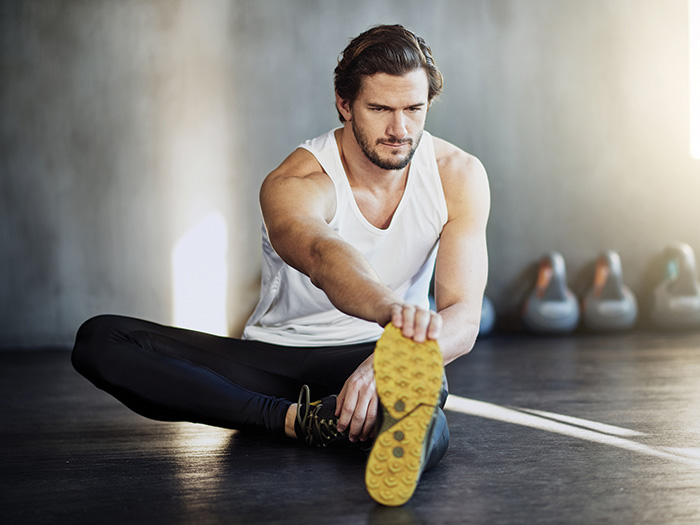How the “Industrial Athlete” Approach Can Serve as a Playbook for Maintaining Worker Safety and Longevity

The concept of an industrial athlete conjures images of strength and agility. Think of muscled workers shoveling coal into a fiery furnace, or a driver dashing from a van to make a timely delivery or of Rosie the Riveter displaying a sculpted forearm and determined look.
And then think of what an industrial athlete might look like if they do physical labor without conditioning or preparing their muscles in advance. Another image of them clutching their back or slipping and falling may come to mind.
Industrial athletics isn’t new, but providers say the wide range of services it covers helps employers in many ways, including training employees to avoid injuries, hiring candidates who are physically able to do a particular job and improving the design of tasks that employees can perform safely.
“The term industrial athlete has been around for a long time,” said Michelle Despres, vice president of Physical Therapy and national clinical leader at OneCall, a health network management company.
Industrial athletics programs are used both to prevent injuries and aid in recovery. They may involve applying the same sort of techniques that keep athletes at peak performance.
“They (professional athletes) condition every day, they strengthen, they stretch, and they hydrate well,” Despres said. “They do conditioning specific to their job.”
Once that parallel is made, an employer can create a program targeted to employees’ particular job.
“A prevention program is very specific to a job’s demands,” Despres said. “What a PT would do is go out to the job site and assess what the job requires. A formal job description would be created that has the physical and functional demands identified and then they’d create a program to match those needs.”
Such a program might “involve some type of warm up, some type of stretching, possibly some type of strengthening,” she said.
“It would include body mechanics training and education on how to do tasks in an ergonomically correct manner. It would be all of those pieces, but tailored to the job. One size doesn’t fit all.”
Chris Studebaker, director of Strategic Accounts at Concentra, a national health care company, said creating a program requires collecting information about what happens both preventively and after an injury occurs.
“There are a lot of processes that need to be established at the beginning of these programs,” he said.
“The athletic trainer or physical therapist and the company will sit down and talk about workers who report early-onset musculoskeletal complaints. Who’s notified, what happens? Then you start scheduling training sessions and safety meetings and you kind of end up building a whole program around these resources.”
How employers use programs varies greatly.
“Some clients will use these programs for new employees only and we’ll work with them for a month,” he said.
“Some places will have ongoing musculoskeletal screening programs where we will give preventive activities for workers to do over a much longer time horizon–maybe even over their whole time working for the employer, it all depends.”
Concentra also can advise employees on other healthy habits including general nutrition, exercise and activity and smoking cessation.
Like Despres and Studebaker, Kris Smith, managing member of GSC Onsite Services in Mesa, Arizona, said industrial athletics programs aren’t new, but they are attracting more interest.
“Employers want to be able to offer employees more proactive on-site services. It’s had a resurgence in the past ten years,” she said.
GSC offers such services as agility testing to ensure the right person is hired for the job, new employee onboarding and education of employees on proper body mechanics to perform their jobs safely and correctly.
“We find, in the whole scheme of industrial athletics or injury prevention programs, success starts from the hiring process,” Smith said.
Success is best achieved, she said, by “hiring the right employee, teaching them how to do the job correctly, making sure the job is set up from an ergonomic standpoint and coaching that person throughout their work life to make sure they’re always using the best body mechanics.”
GSC also offers a hands-on component that enables injury prevention specialists to actually put hands on an employee to provide stretching, massage and other symptom relief techniques, she said.
Of course, measuring the success of an industrial athletics program also is crucial.
“A company needs to understand what the metrics are for measuring the results of the program and they need to be functional metrics,” Smith said.
“They need to be meaningful and really provide the company with not just data, but data that shows how the program has impacted the company’s bottom line so they have a return on their investment, not just a lot of data that does not do much.”
Bob Patterson, executive vice president of Briotix Health LP, a provider of Industrial Athletics/Industrial Sports Medicine solutions, and a partner with OneCall, said industrial athletics programs yield good results.
He cites a regional hospitality company that saw a 50% reduction in group health musculoskeletal costs from implementing and sustaining an industrial sports medicine program as evidence that these programs work. In another case, a heavy manufacturing client saw a 100% reduction of musculoskeletal disorders (MSDS) in year one and achieved $524,109 cost avoidance in worker compensation MSD spend.
Further, a large distribution company that had a 60% reduction in MSD claims costs over the first three years and a large utility that had a 60% reduction in cost per claim. &










